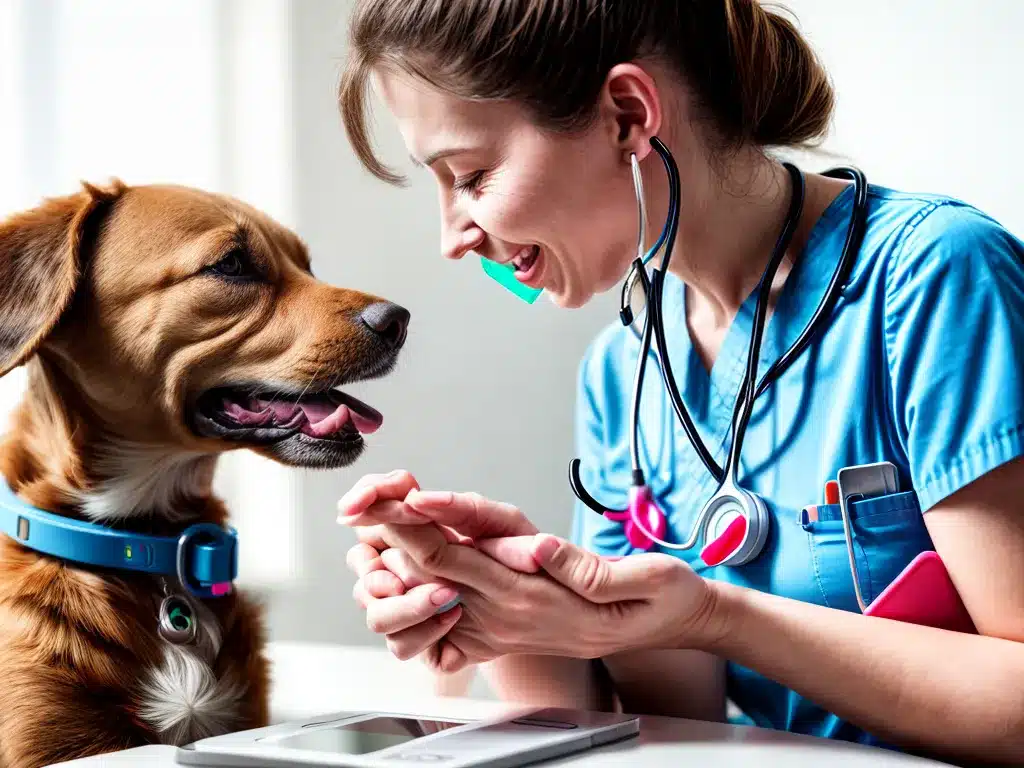
IoT Veterinary Care for Pets in 2024
In 2024, veterinary medicine will be dramatically transformed by the proliferation of Internet of Things (IoT) devices and services. As a pet owner in 2024, you will have access to unprecedented insights into your pet’s health and behavior through smart connected devices. This will enable more preventative, personalized and proactive veterinary care for your furry friends.
Continuous Health Monitoring
Pets will wear smart collars, tags and implants capable of tracking key health indicators like heart rate, respiration, activity levels, sleep patterns and more. This will allow constant monitoring to detect early signs of illness and establish baselines for normal vitals. Data will sync to your phone and your vet’s system.
With continuous tracking, vets can identify health changes before symptoms appear. Your vet will call you if abnormalities are found, allowing earlier intervention. Annual checkups will be supplemented by regular remote monitoring. Wearables may even detect emotional states like anxiety. So vets can prescribe treatments accordingly, like calming medications.
Proactive monitoring will reduce vet visits for minor issues and enable earlier treatment of serious ones. It also helps personalize care based on your pet’s unique vitals and needs.
Automated Medication and Care
In 2024, smart pet food dispensers, waterers and litter boxes will automatically provide medications, nutrients and fluids tailored to your pet’s condition and needs.
For example, dispensers can release supplements at optimal times to manage chronic issues like arthritis. Waterers ensure proper hydration for pets prone to UTIs. Litter boxes can monitor output for potential problems.
** Robotic systems** will also enable pets to receive physical therapy, wound care and other treatments at home. With remote veterinary guidance, the robots can provide laser, massage and other therapies based on prescribed regimens.
This automation makes proactive, regular and post-procedure care easier for owners. It also reduces stress for pets who dislike vet visits.
Enhanced Diagnostics and Imaging
Veterinary clinics will be equipped with AI-powered imaging and diagnostic tools like:
- Smart microscopes that scan samples for parasites, cancers and infections
- Dental and dermatology cameras that capture high-resolution, subsurface images
- Body scanners that create 3D models to visualize internal structures
- Surgical robots with micro-sensors that can navigate delicate procedures
These technologies will enable vets to evaluate pets more thoroughly and less invasively. High-resolution images and models facilitate better diagnosis and treatment.
Clinics will also have comprehensive genetic screening to assess disease risk factors. This allows customized prevention and wellness plans.
In-Home Veterinary Services
House calls will make a comeback! On-demand veterinary services will be available for home visits. If your pet seems ill or injured, a vet can be dispatched to your home for an examination and diagnostics.
For minor procedures like exams, injections or nail trims, home visits reduce the stress of travel and vet offices. They are more convenient and provide insights into your pet’s home behavior.
Home-based services also enable post-operative and hospice care. Vets can check surgical sites, change dressings and adjust pain medications to keep pets comfortable at home. End-of-life care is more peaceful without transport stress.
So in 2024, harnessing technology will transform pet care into a far more personalized, proactive and convenient experience. Our furry friends will enjoy longer, healthier lives thanks to data-driven insights and care. Exciting innovations lie ahead as technology unleashes the full potential of veterinary medicine for our beloved animal companions.












